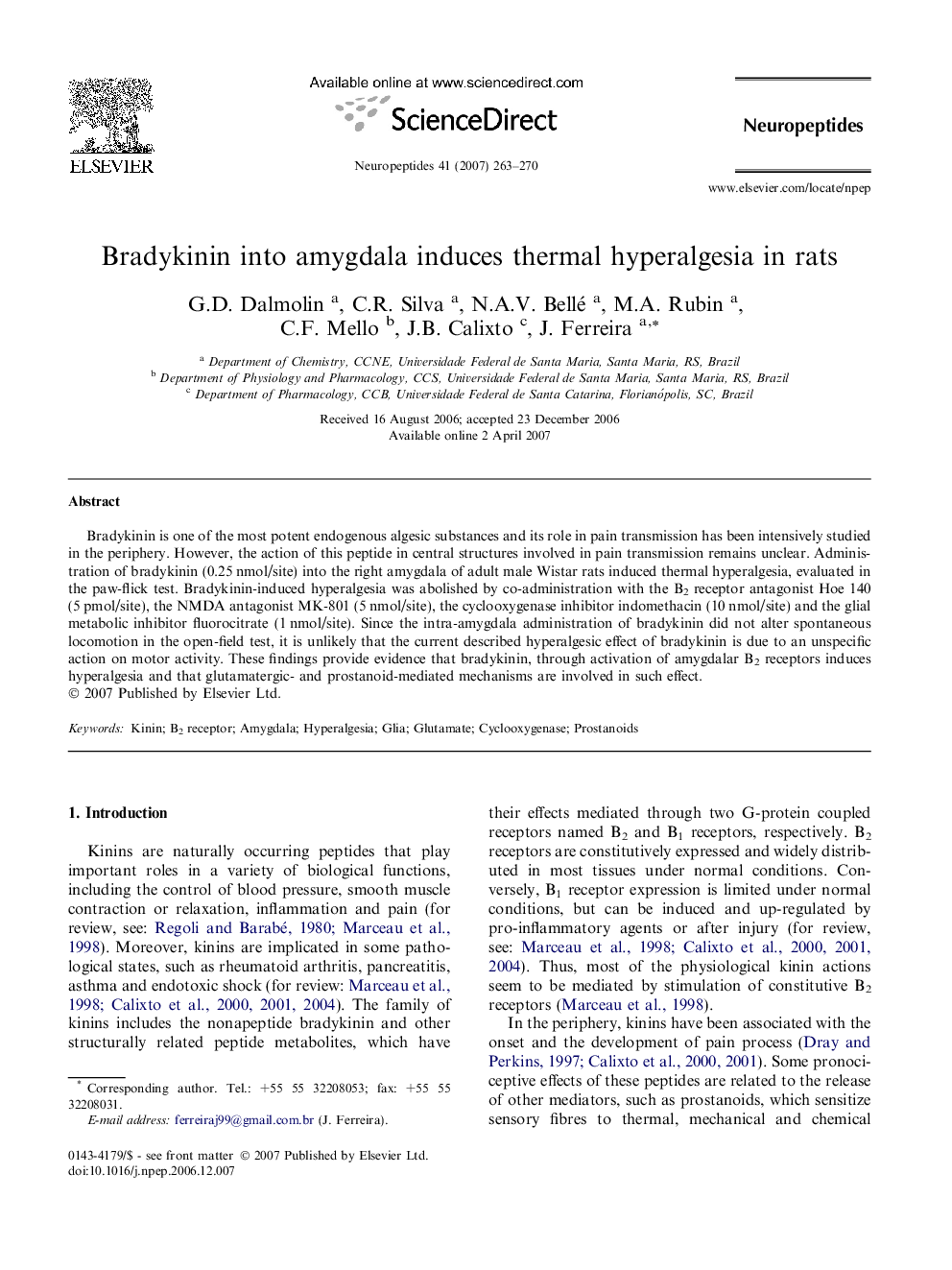| Article ID | Journal | Published Year | Pages | File Type |
|---|---|---|---|---|
| 2808484 | Neuropeptides | 2007 | 8 Pages |
Bradykinin is one of the most potent endogenous algesic substances and its role in pain transmission has been intensively studied in the periphery. However, the action of this peptide in central structures involved in pain transmission remains unclear. Administration of bradykinin (0.25 nmol/site) into the right amygdala of adult male Wistar rats induced thermal hyperalgesia, evaluated in the paw-flick test. Bradykinin-induced hyperalgesia was abolished by co-administration with the B2 receptor antagonist Hoe 140 (5 pmol/site), the NMDA antagonist MK-801 (5 nmol/site), the cyclooxygenase inhibitor indomethacin (10 nmol/site) and the glial metabolic inhibitor fluorocitrate (1 nmol/site). Since the intra-amygdala administration of bradykinin did not alter spontaneous locomotion in the open-field test, it is unlikely that the current described hyperalgesic effect of bradykinin is due to an unspecific action on motor activity. These findings provide evidence that bradykinin, through activation of amygdalar B2 receptors induces hyperalgesia and that glutamatergic- and prostanoid-mediated mechanisms are involved in such effect.
